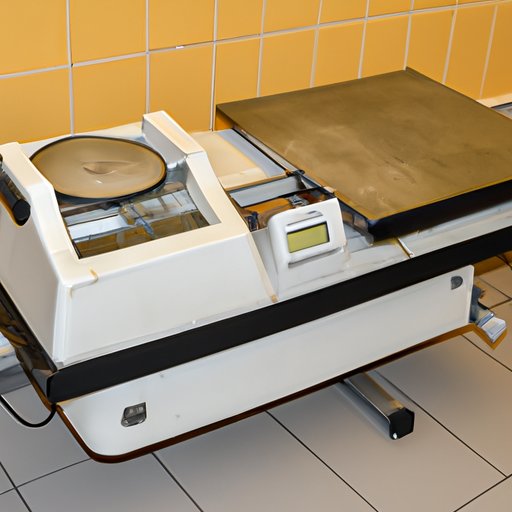
Introduction
Weight measurement is an important aspect of health and fitness, but have you ever wondered how it is measured and what factors can affect its accuracy? In this article, we will explore the mechanics of weight measurement, different types of scales, and alternative methods of measurement. We will also discuss the importance of calibration and environmental factors that can affect weight measurements. By the end of this article, you will have a better understanding of how weight is measured and how to achieve accurate measurements.
How a Scale Measures Weight
Before we dive into different types of scales, it’s important to understand the basic principles of weight measurement. Weight is the force exerted on an object due to gravity, and it is measured in units of force such as pounds or kilograms. A scale measures weight by exerting an opposing force on an object that is placed on it, and this force is used to calculate the weight of the object.
The mechanics of how a scale operates involves a spring or load cell that compresses or flexes in response to the force of the object placed on it. A mechanical scale uses a system of levers and counterweights to magnify and display the weight, while a digital scale converts the amount of compression or flexion of the load cell into an electrical signal, which is then displayed on a screen.
Different Types of Scales and How They Operate
There are two main types of scales: mechanical and digital. Mechanical scales have been in use for centuries and rely on the principles of balancing weights. These scales have a platform that holds the object being weighed, and a set of counterweights that can be moved along a beam to balance the weight of the object. The weight is then read based on the position of the counterweights on the beam.
Digital scales, on the other hand, use load cells to measure weight and convert it into a digital format that is displayed on an LCD screen. These scales are more accurate than mechanical scales and are widely used in homes, gyms, and doctor’s offices.
The Calibration Process and Why It’s Necessary
Calibration is the process of checking and adjusting a scale to ensure it is providing accurate measurements. Calibration is necessary because scales can become inaccurate over time due to regular use, changes in temperature, or other factors. For example, if a scale is exposed to high temperatures, it can cause the load cell to expand, resulting in inaccurate readings.
The calibration process involves adjusting the zero and span of the scale. Zero is the point at which the scale reads zero weight, and span is the range of weights that the scale can measure accurately. Calibration requires special equipment and should be performed by a professional to ensure accuracy.
The Accuracy and Limitations of Different Weight Measurements
Weighing oneself on a bathroom scale is a common method of weight measurement, but it may not provide the most accurate results. For example, a bathroom scale may not be calibrated regularly, or it may not be placed on a flat surface, which can affect accuracy. Additionally, weight measurements can be influenced by other factors such as hydration, time of day, and clothing.
To achieve more accurate weight measurements, doctors and healthcare providers use medical-grade scales that are calibrated regularly and placed on a flat surface. These scales also account for clothing and other factors that can impact weight measurements.
Alternative Methods for Measuring Weight
Body mass index (BMI) is a common method used to measure body fat based on height and weight. BMI is calculated by dividing a person’s weight in kilograms by their height in meters squared. Skinfold thickness measurements and bioimpedance analysis are other methods used to estimate body composition. Skinfold measurements involve pinching the skin and measuring its thickness, while bioimpedance analysis measures the resistance of tissue to an electrical current.
Environmental Factors That Can Influence Weight Measurement
Humidity, altitude, and temperature can all affect the accuracy of weight measurements. Humidity can cause the load cell to expand or contract, while altitude can affect the force of gravity, resulting in different weight measurements. Temperature can also affect the load cell, causing it to expand or contract, which can affect accuracy. It’s important to keep scales in a stable environment and to avoid extreme temperatures and humidity to maintain accuracy.
Tips for Consistent and Accurate Weight Measurements
To achieve consistent and accurate weight measurements, it’s important to weigh yourself at the same time every day, preferably in the morning before eating or drinking. Wear light clothing or weigh yourself without clothing to account for clothing weight. Always use the same scale and make sure it’s placed on a flat surface. Regular calibration is also important to maintain accuracy.
Conclusion
Weight measurement is an important aspect of health and fitness, but it’s important to understand how it’s measured and the factors that can affect accuracy. By understanding the principles of weight measurement, different types of scales, and alternative methods of measurement, you can achieve more accurate results. Remember to maintain consistency with your measurements, regularly calibrate your scale, and keep it in a stable environment to ensure accurate readings.




